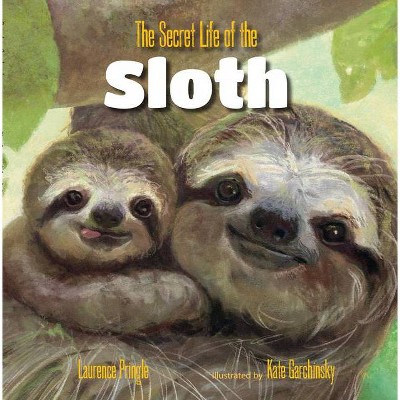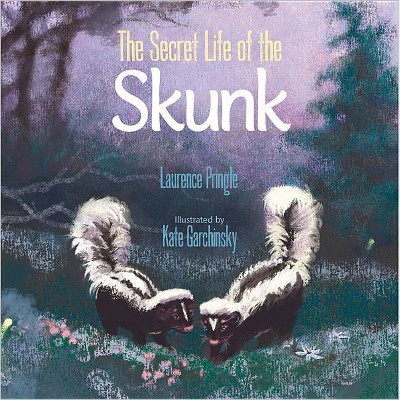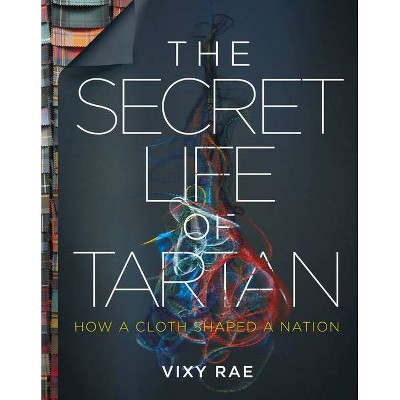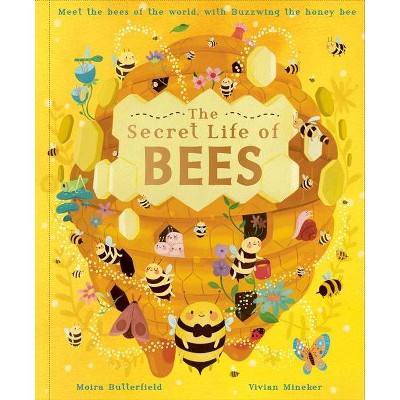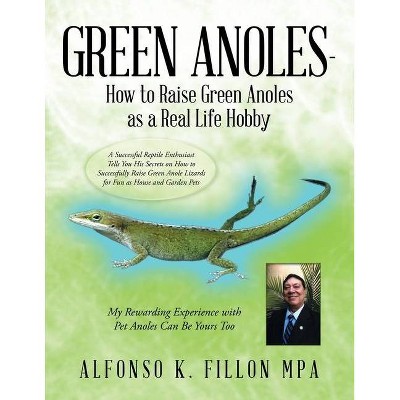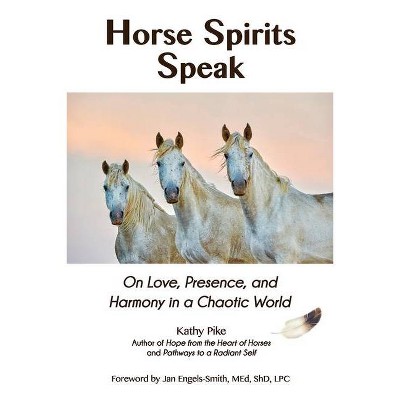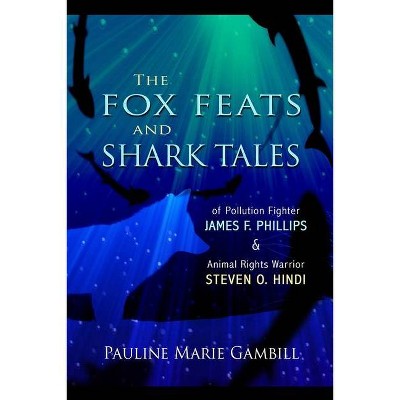The Secret Life of Flies - by Erica McAlister (Hardcover)
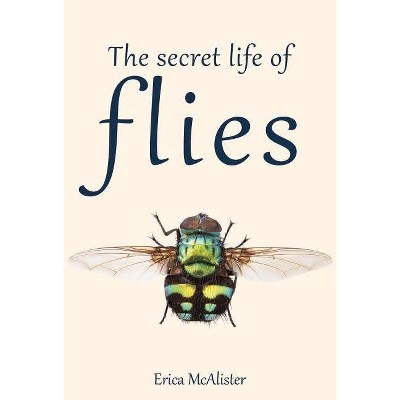
Similar Products
Products of same category from the store
AllProduct info
<p/><br></br><p><b> About the Book </b></p></br></br>Originally published: London: Natural History Museum, c2017.<p/><br></br><p><b> Book Synopsis </b></p></br></br><p> Stories and science about nature's most complex, crucial and highly adaptive insect. </p><p> <i>The Secret Life of Flies</i> takes readers into the hidden world of snail killers, con artists, crazy sex and a great many silly names. It dispels common misconceptions about flies and reveals how truly extraordinary, exotic and important are these misunderstood creatures. </p><p> There are ten chapters: </p><p> 1. The immature ones - Squirmy wormy larvae can be just a bit unnerving, especially when they're in large numbers. 2. The pollinators - Those annoying No See Ums, or midge flies, are the only pollinator of the chocolate-producing cacao tree, a status held by many of the pollinators. 3. The detritivores - These garbage eaters are often fluffy and thus water-repellent, good for a life spent in a sewer. 4. The vegetarians - Entomological spelunkers, many of these flies prefer plant roots forsaking the leaves to other creatures. 5. The fungivores - The mushroom eaters include the dark-winged fungus gnats whose wing patterns are one of the author's favorites. 6. The predators - Here are the most devious and imaginative methods of luring, capturing and eating prey. 7. The parasites - Their methods of survival are often disgusting but the evolutionary genius is admirable. 8. The sanguivores - McAlister responds to the perpetual question, exactly why do we have blood-sucking disease-spreading mosquitos? 9. The coprophages - The champions of dung, detritus and other unpleasant things. 10. The necrophages - The body eaters without which we would be in a most disagreeable situation. </p><p> In clear language, McAlister explains Diptera taxonomy and forensic entomology, and describes the potential of flies to transform their relationship with humans from one of disease vector to partner in environmental preservation. She has a wonderful knack for storytelling, deftly transforming what could be dry descriptions of biology, reproduction and morphology into entertainment. She takes readers to piles of poo in Ethiopia by way of underground caves, latrines and backyard gardens, and opens the drawers at the Natural History Museum to rhapsodize over her favorite flies. </p><p> <i>The Secret Life of Flies</i> is full of stories and tongue-in-check descriptions, but the science is rigorous, authoritative and will be enjoyed by dipterists, lepidopterists, insect enthusiasts, naturalists, and general readers. </p><p/><br></br><p><b> Review Quotes </b></p></br></br><br>A fascinating read... Many color photographs add immeasurably to the book's appeal. Curious naturalists of all ages will find The Secret Life of Flies quotable and entirely irresistible.--Scott Shalaway "Vindicator" (5/26/2018 12:00:00 AM)<br><br>An enjoyable and informative read. Highly recommended for anyone interested in biology and in particular those intrigued by entomology and zoology.--Tina Chan "Library Journal" (8/1/2017 12:00:00 AM)<br><br>An inherently fascinating and impressively informative read from cover to cover, The Secret Life of Flies is unreservedly recommended for personal, community, and academic library collections.-- "Midwest Book Review" (12/1/2017 12:00:00 AM)<br><br>Dr. McAlister has captured her affection for the Diptera in The Secret Life of Flies, a short, rich book by turns informative and humorous, both a hymn of praise to her favorite creatures and a gleeful attempt to give readers the willies.--James Gorman "New York Times" (11/14/2017 12:00:00 AM)<br><br>From the first discovery of the book's impending publication I had high hopes that it would be something special, and I am very pleased to report that my hopes were exceeded... It takes what for many readers is a known (flies) but not a well-understood (their astonishing diversity in form and ecological roles) subject and presents it in a manner that is both enlightening as well as entertaining. Such an accomplishment is deserving of high praise indeed, and it is very much hoped that Dr. McAlister's book will find its way onto the reading tables of avid naturalists as well as the casually curious alike.--Johannes E. Riutta "The Well-Read Naturalist" (6/4/2017 12:00:00 AM)<br><br>Imagine the most enthusiastic teacher you've ever had, and you get close to the experience of reading this book. The writing is liberally peppered with exclamation points, and it is infectious! There are enough jawdropping fly facts in here to catch the attention of any reader who wants to know more about the natural world. Truly, Diptera are lucky to have such a passionate advocate in McAlister. As she rightly points out, too often are flies, and insects in general, ignored by mainstream conservationists in their campaigns to protect the charismatic macro-fauna... Flies are often underappreciated, but they are essential to our daily lives. They pollinate many economically and culturally important crops (thank a fly from the Forcipomyia genus the next time you enjoy chocolate!), control other insects that are agricultural pests, are a food source for animals that we enjoy watching, such as birds, and do an excellent job of decomposing plant and animal waste. However, McAlister does not spend all her time trying to convince the reader that flies are only worthy of our attention because of their usefulness to humans. She constantly regales us with descriptions of how fascinating these animals are as objects of scientific study... McAlister has divided her book into 10 chapters based on functional feeding type, such as the Pollinators, the Coprophages (the eaters of animal waste), the Vegetarians, the Parasites, and the Sanguivores (bloodsuckers like mosquitos and black flies). Within these chapters McAlister nimbly jumps among species and anecdotes that connect flies to history, medicine, agriculture, forensic science, conservation, and even pop culture... I hope The Secret Life of Flies will bring you more than fodder for small talk. It has the power to inspire you to pay closer attention to all the small things around us, like the mosses, plankton, insects, bacteria, and fungi that collectively make the world work in ways we don't understand. As naturalists, ecologists, and conservationists, we should strive to learn as much as we can about all life, and McAlister's engaging look into the world of flies is a great place to start.--Emma Bocking "The Canadian Field-Naturalist" (7/1/2017 12:00:00 AM)<br><br>In The Secret Life of Flies she draws upon her years of experience, research, and expertise to put forth in clear, accessible language for the non-specialist general reader, an explanation of Diptera taxonomy and forensic entomology, and descriptions of the potential of flies to transform their relationship with humans from one of disease vector to partner in environmental preservation. Erica also reveals an appealing knack for storytelling, deftly transforming what could be dry descriptions of biology, reproduction and morphology into entertainment. Erica takes readers to piles of poo in Ethiopia by way of underground caves, latrines and backyard gardens, and opens the drawers at the Natural History Museum to rhapsodize over her favorite flies. While The Secret Life of Flies is comprised of both stories and tongue-in-check descriptions, be assured that the science is rigorous, authoritative and will be enjoyed by dipterists, lepidopterists, insect enthusiasts, naturalists, and non-specialist general readers with an interest in the subject. Unique, informative, exceptionally well written, organized and presented, The Secret Life of Flies is an especially recommended addition to both community and academic library collections.-- "Midwest Book Review" (10/1/2017 12:00:00 AM)<br><br>It's a little gross, very entertaining, and all about that insect that so many of us love to hate--the fly! McAlister, a Senior Curator at the Natural History Museum in the United Kingdom, uses her book's 248 pages to champion these amazing, exotic and important creatures. It's no small feat for an experienced researcher to write in a way that is accessible to a non-scientific audience, and McAlister accomplishes this. When reading her words, one almost feels as if she's engaging the reader in a conversation, beckoning them closer to look at a maggot that showed up in a most unusual place or at a parasitic fly that prefers the company of frogs. The Secret Life of Flies is appropriate for anyone who wants to learn a bit more about these creatures, including younger and older readers who enjoy the sometimes gross and amusing ins and outs of biological study. It's easy to picture a biology student, an outdoorsy ten-year-old, and an enthusiastic field biologist exclaiming with glee when finding out exactly where that mystery maggot came from. The Secret Life of Flies offers a wonderful window into a world that many of us take for granted and educates readers about an important group of creatures in our natural world.--Esther Jackson "New York Botanical Garden, Plant Talk Blog" (7/5/2018 12:00:00 AM)<br><br>One of the best Biology books of all time.-- "Book Authority" (9/27/2018 12:00:00 AM)<br><br>One of those books you wish that more scientists would write... In this handsome and very giftable little book, McAlister takes you on a ramble through the order Diptera -- the flies, midges, mosquitoes etc. -- with each chapter themed around a certain fly diet and lifestyle... McAlister's goal is foremost to show you how flies, which we often ignore or just swat, are fascinating creatures in their own right. Their tiny dramas may be largely invisible to us, but they are no less intriguing for it, and no less deserving of our curiosity and attention. And in some ways, this is a little book of gratitude -- we would be knee-deep in corpses and excrement if it was not for these industrious little insects.-- "The Inquisitive Biologist" (8/19/2020 12:00:00 AM)<br><br>Without flies, we'd be knee-deep in shit (literally) -- and have no chocolate! Those are just two reasons why Erica McAlister, author of The Secret Life of Flies, gets excited about the much-reviled creatures found in one usually annoying form or another nearly everywhere on earth. Those reasons might well be sufficient all by themselves, but McAlister -- an entomologist at the Natural History Museum in London -- offers plenty more, and her sense of humor is a bonus... While The Secret Life of Flies isn't intended as a field guide to help amateur dipterists tell the more than 160,000 species apart, it includes dozens of dramatic and colorful what-the-heck-is-THAT? illustrations and photographs accompanied by captions that are often amusing.--Randy Cepuch "Washington Independent Review of Books" (10/1/2017 12:00:00 AM)<br><br>2018 Clarivate Analytics Award for Communicating Zoology-- "Zoological Society of London" (3/26/2019 12:00:00 AM)<br><p/><br></br><p><b> About the Author </b></p></br></br><p> Erica McAlister is curator of <i>Diptera</i> at the Natural History Museum, London. As a child, she kept dead mammals to watch the maggots emerge from them, and as an adult she will admit to squealing like a child when rummaging through the museum's collections. She has studied around the world, and recently presented the BBC Radio 4 series <i>Who's the Pest?</i> </p>
Price History
Price Archive shows prices from various stores, lets you see history and find the cheapest. There is no actual sale on the website. For all support, inquiry and suggestion messages communication@pricearchive.us



